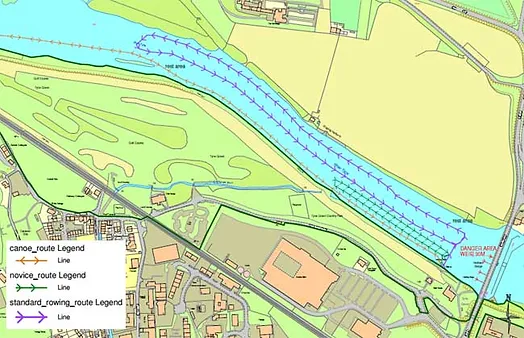Club Safety and Emergency Action Plan
Select Club Safety and Emergency Action Plan to view or download the document.
Rowing Activities Risk Assessment
Select rowing activities risk assessment to view or download a copy of the document.
Capsize & Recovery
Watch this video on capsize and recovery (external link to YouTube).
What to do if you fall in
The above introduces the 3 key steps if you do fall in.
- Get free from the boat.
- Get out of the water.
- Get off the water.
Stay with the boat unless doing so places you in greater danger. It is your life raft!
To watch a video on capsizing in a scull, click here.
To watch a video about a sculler hitting a buoy, click here.
To watch North Yorkshire Fire and Rescue’s water safety demonstration, click here.
Safety Alert – Check Your Boat Before You Go Afloat
Boats should be checked each time before they go afloat; many coaches teach their rowers to do this. A thorough boat and equipment check includes the following:
- no visible signs of damage to the hull, for example scrapes or cracks
- buoyancy compartments, seals, hatch covers, boat hull and ventilation bungs are secure and watertight. Buoyancy Bags should be installed if no under seat buoyancy compartments are fitted
- bow ball is in good condition and securely fixed (Some boats may not need bow balls if their bow is not pointed or they are made from a soft material. This is specified in the 2016 rules of racing)
- fixing screws or bolts do not represent a hazard in the event of an accident
- heel restraints are strong secure and durable and the correct length. They must be properly adjusted (each heel shall be restrained to prevented it from rising higher than 7cm measured at right angles, from the footplate) and in working order
- rudder lines, steering mechanisms and rudder (where fitted) and fin, are secure and in good working order
- outriggers, swivels, gates, seats, runners and stretchers are secure and operating correctly
- blades are undamaged and buttons are secure and properly set
- the boat is suitable for the situation in which it is to be used, for example maximum crew weight
- lighting, if required, is suitable for the outing and working correctly.
Any boat or equipment that is found not to be satisfactory should be quarantined, with the nature of the damage clearly marked, and to ensure that it is not used. It is also important to ensure that any damage is repaired before the boat or equipment is used again.
Do not assume that everything is OK, check it for yourself.
Watch this video to learn more about safety checks.
Rowing Route

British Rowing RowSafe
View the most recent information about RowSafe, which offers advice, for rowers, clubs and competitions, below or to download a copy, click here.
